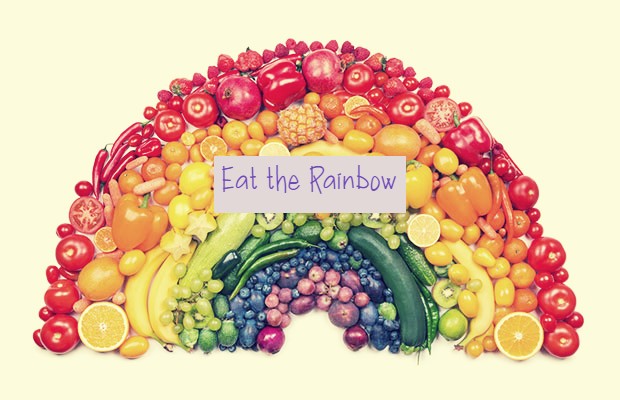When eating a balanced diet, it is important to remember that you should include a variety of colors to properly acquire the right amount of nutrients. Fruits and vegetables include their own disease-fighting chemicals called Phytochemicals. Phytochemicals are what give each fruit and vegetable their color, nutrient properties, and specific characteristics. Below you can find each color category of fruits and vegetables and what is important about them.
How Eyesight Effects Eating Disorders
Red
Fruits and Vegetables: red bell peppers, cherries, beets, tomatoes, and watermelon
Nutrients: Vitamin A is a major component of red fruits and vegetables. Vitamin A is most important for maintaining good eyesight. Another Nutrient found in red fruits and vegetables is vitamin C, which is most common for helping the immune system. Although Vitamin C is notorious for fighting colds and helping people not get sick, there actually has not been any proof of this. Vitamin C is most important for those who have an impaired immune system such as smokers, cancer patients, or those with autoimmune diseases. The major phytochemical in red fruits and vegetables is called Lycopene. Lycopene is a very strong antioxidant that helps fight cancer and also works to get our heart healthy. Lycopene is mostly found in tomatoes but can also be found in watermelon and grapefruit.
Orange
Fruits and Vegetables: Carrots, sweet potatoes, cantaloupes, oranges, and orange bell pepper
Nutrients: Just like red fruits and vegetables, the color orange provides a great source of vitamin A and Vitamin C. Along with those two nutrients, orange-colored foods provide potassium and vitamin B6. Carotenoids, which are organic pigments, are what gives these foods their orange color. Beta Carotene is a well-known carotenoid which is mainly used to be converted into vitamin A to help with vision. Another carotenoid found in orange foods is called Lutein which is stored in the eye and helps to prevent cataracts.
Yellow
Fruits and Vegetables: Bananas, squash, yellow bell peppers, and lemons
Nutrients: Yellow fruits are extremely high in vitamin C which helps strengthen the immune system. Another nutrient that yellow fruits are high in, mainly bananas, is potassium which aids in the prevention of muscle cramping. Yellow fruits and vegetables also contain the same carotenoids as orange fruits and vegetables, which are betacarotene and lutein.
Green
Fruits and Vegetables: Spinach, Broccoli, Asparagus, Green beans, Lettuce, Apples, and Limes
Nutrients: Green fruits and vegetables are great sources of carotenoids, indoles, and saponins. Indoles and saponins both have great anti-cancer properties and are strong antioxidants. Leafy greens such as spinach and broccoli are excellent sources of folate which is extremely important for pregnant women in preventing neural tube defects in babies. Folate requirements increase in pregnant women for this reason making leafy greens a very important food for those who need extra folate.
Blue / Purple
Fruits and Vegetables: Cabbage, Eggplant, Blackberries, Plums, and Purple Grapes
Nutrients: The pigment that gives these fruits and vegetables their colors is anthocyanin which is a very powerful antioxidant that protects from cell damage, reduces the risk of cancer, reduces the risk of stroke, and also reduces the risk of heart disease.
Emily Baum, M.S., RDN, LD



